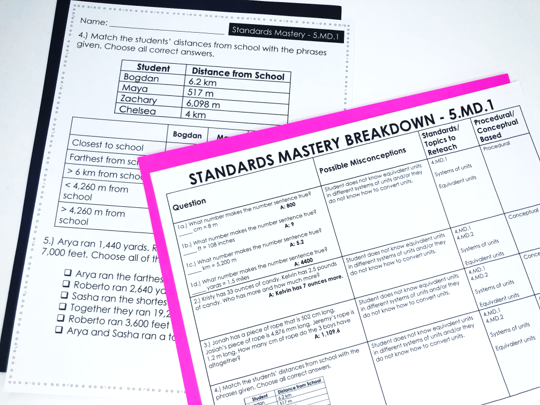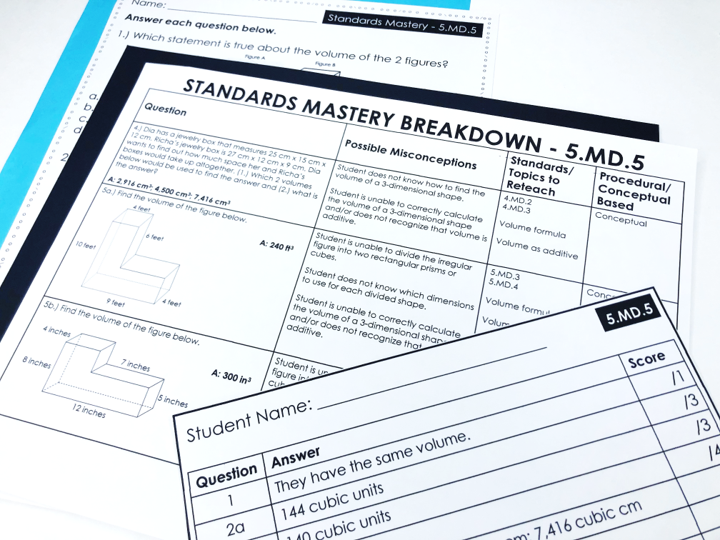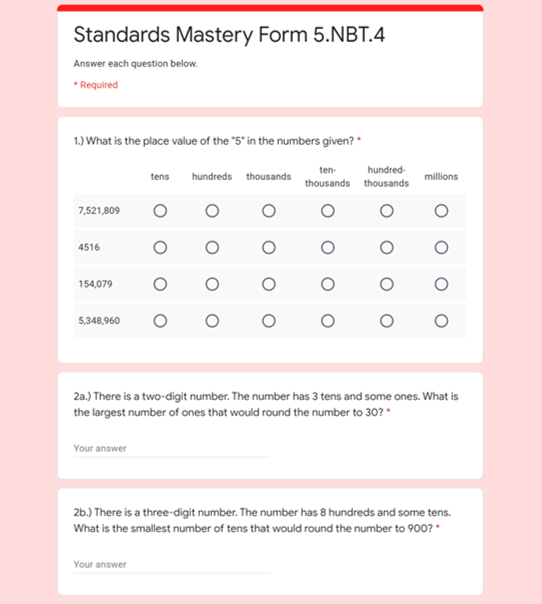What is standards-based grading?
Many schools are going away from traditional percentage or letter grades and transitioning towards standards-based grading. What is standards-based grading? This method is when teachers grade based on mastery of skills and state or national standards. Grades are recorded in terms of mastery of the standard. For example, a student may receive a below grade level, at-grade level, or beyond grade-level score. Another way standards-based grades are given are beginning, progressing, proficient, and advanced. Grades may be recorded based on each individual standard throughout the year, and an overall standards-based grade may be given for each term for the course.

Be clear on the standards you want to cover.
Another important thing about standards-based grading is to be able to articulate clearly and prior to the lesson what the goal and standard is. You can put these into student-friendly “I can” statements, but make sure you ultimately know how your lesson connects to the standard you are assessing.

Why should you use digital assessments for standards-based grading?
Standards-based grading does not have to overcomplicate your teaching. In fact, it can be simplified. Using digital assessments in your standards-based grading practices will help you quickly find out which standards your students are struggling with, meeting, or exceeding.

Auto grading
Digital assessments like the standards-based mini assessments auto-grade for you! Using Google Forms, students simply take the assessments online, and you’re able to generate a spreadsheet and analyze data from the assessments results with one click! These assessments also include a print version and a teaching chart so you can target the misconceptions of your students- all the work is done for you!
Google Classroom integration
Many teachers have gotten familiar with Google Classroom during distance learning, but it’s the perfect platform to use all yearlong! You can simply share digital standards-based assessments in Google Classroom, and your data is just a click away. In addition, you can create your own forms and quizzes directly from Classroom!
Alignment with state testing
Let’s face it! Most of state testing is now digital. Why not practice digital testing during the school year. When students get more comfortable with this format, they’re more likely to perform better on the big test! Practice testing the same way you would practice any other skill you want your students to meet. These digital standards-based mini assessments are directly aligned with Common Core State Standards. You can also check how it fits with your local state standards as well!

Student buy-in
Finally, students appreciate when something is digital. It takes away the handwriting fatigue and the mass of papers. Digital tools are part of the world your elementary students have grown up in. Allow them to embrace their digital strengths while showing them how to properly use these tools for classroom use. Transitioning to standards-based grading doesn’t have to cause you stress. Using standards-based grading can help you really understand what skills your students need to work on. In addition, digital standards-based assessments will make sure you get the data instantly to help inform your instruction and give your students everything they need to reach their learning goals! How do you use standards-based grading in your classroom?





